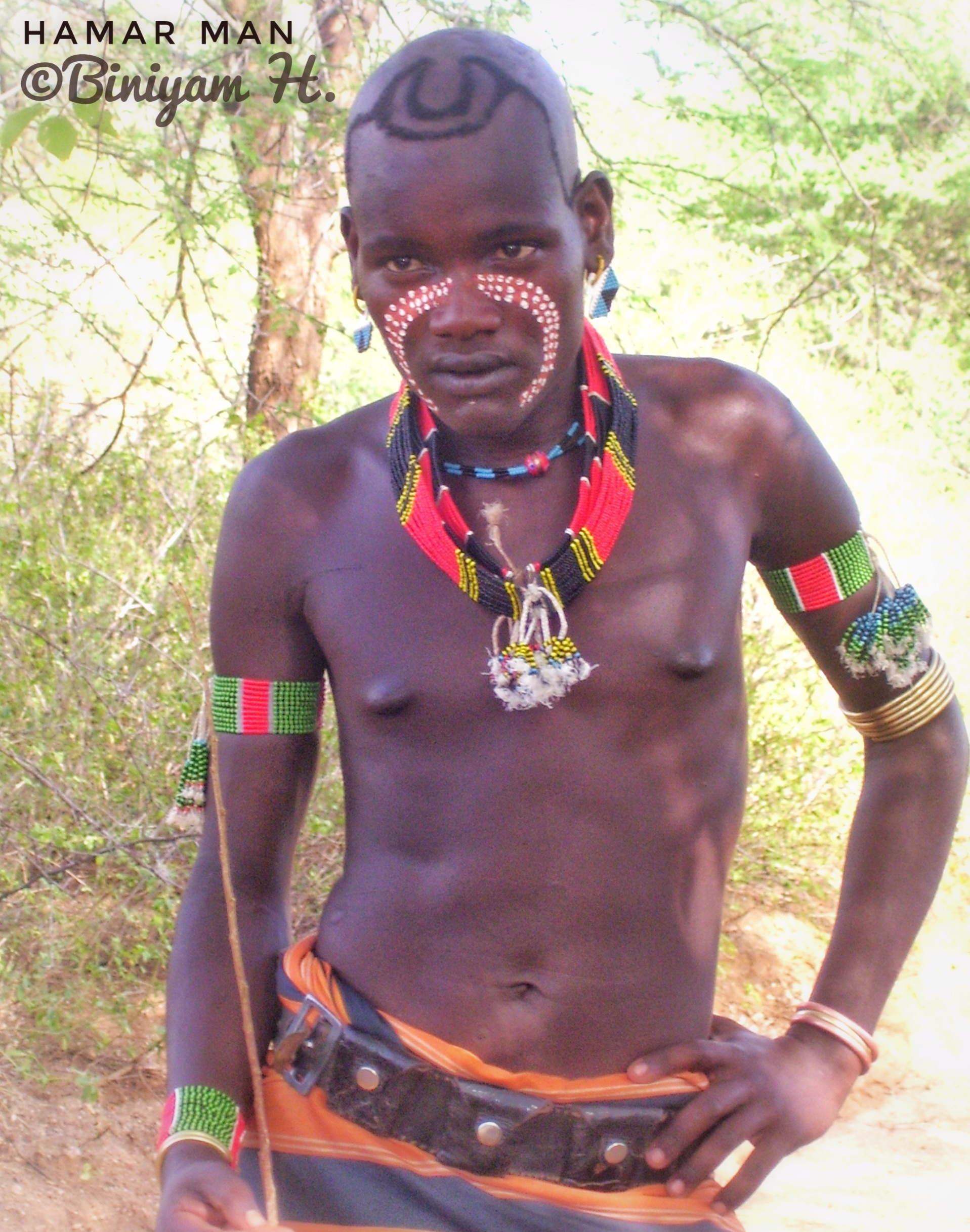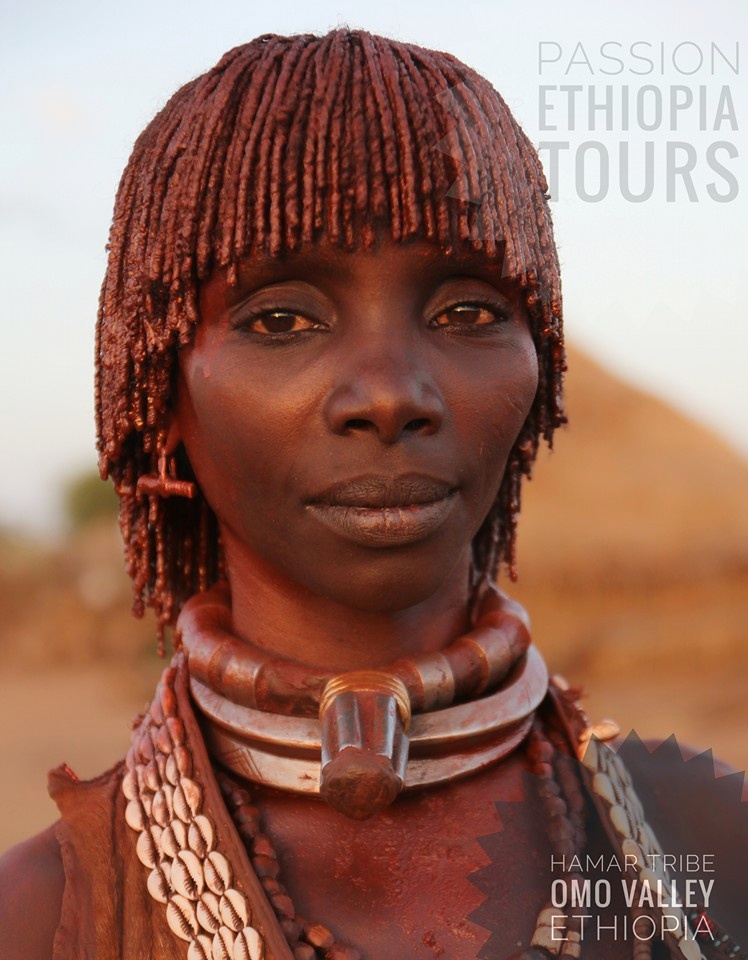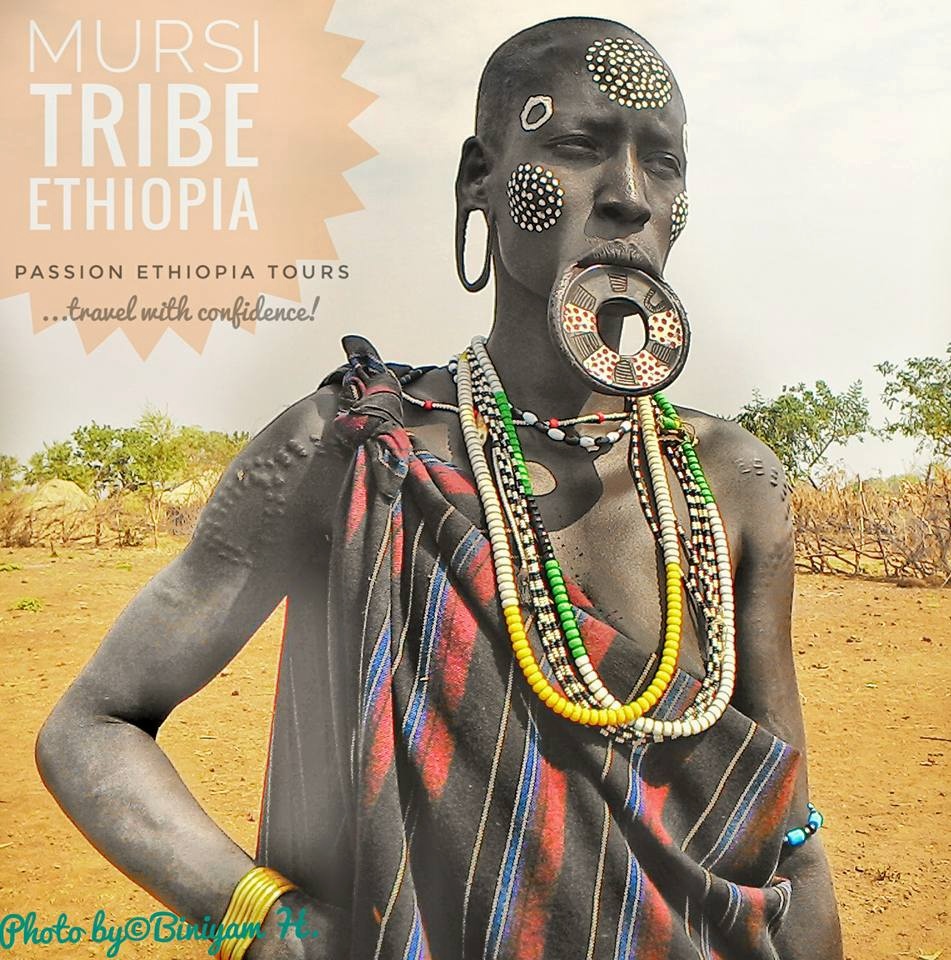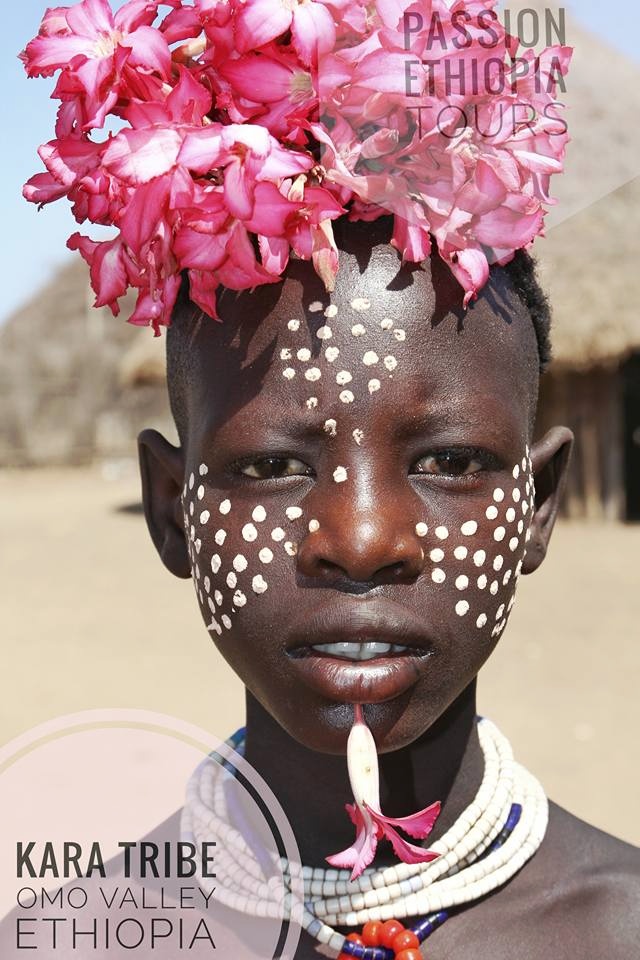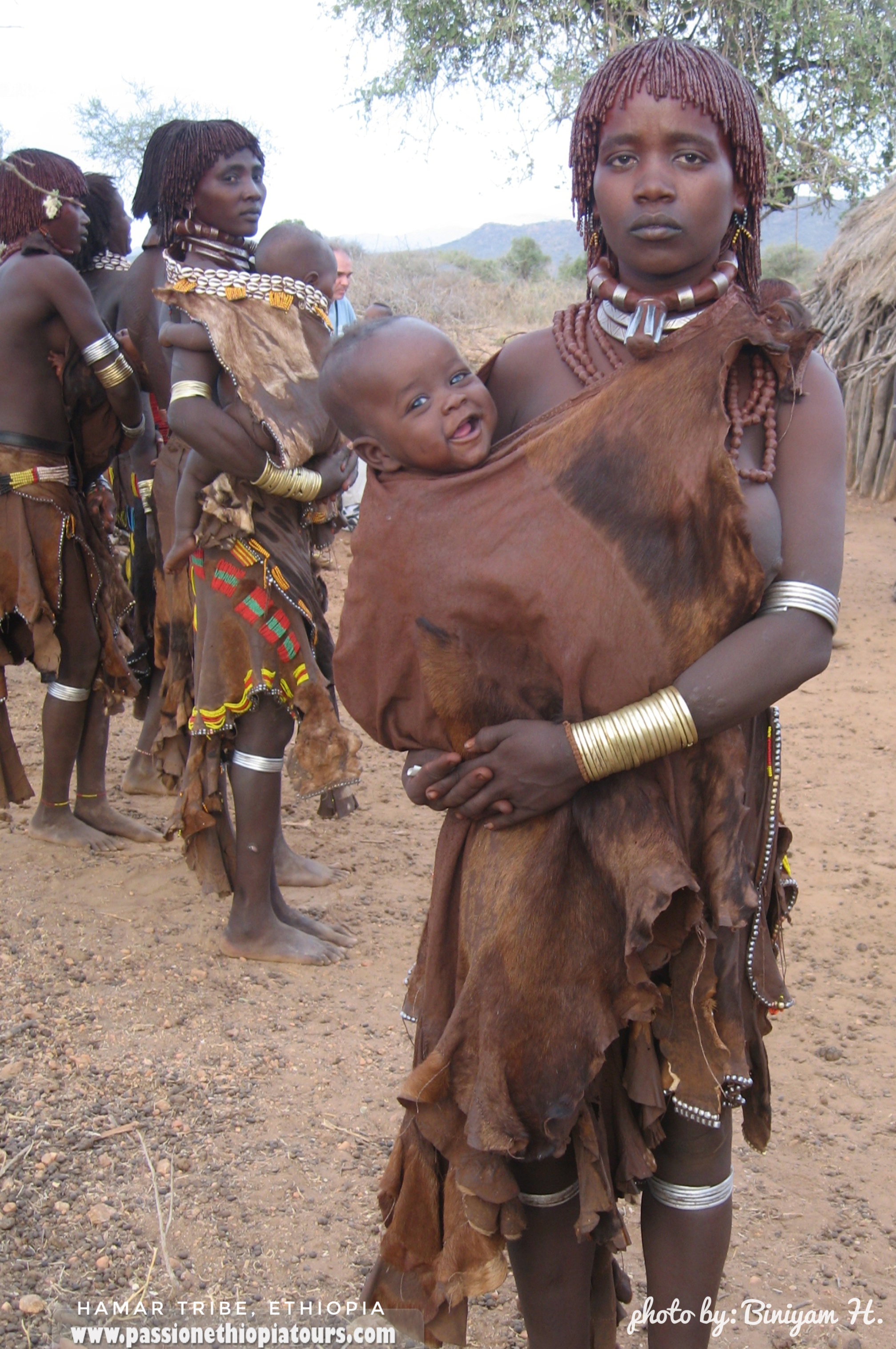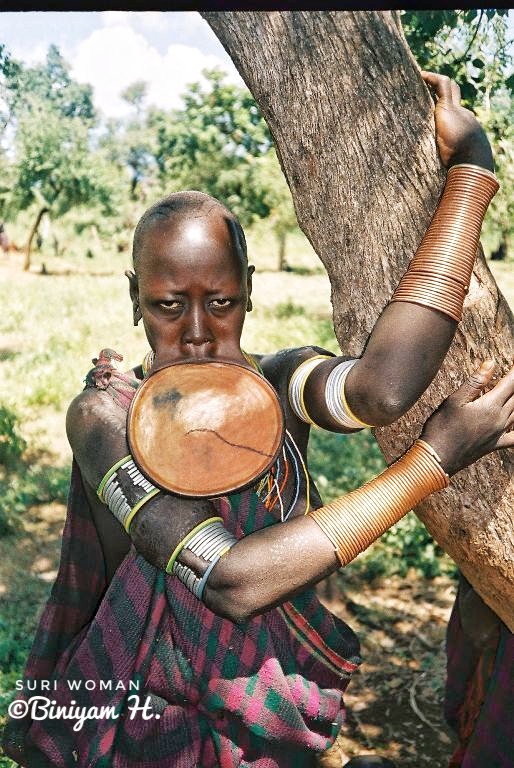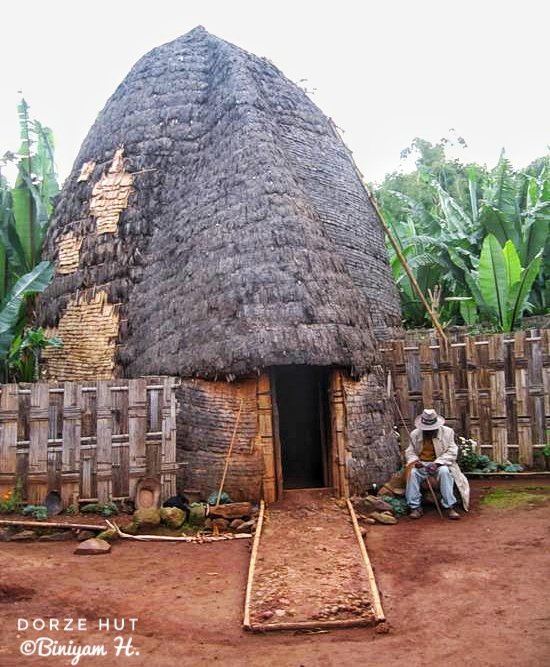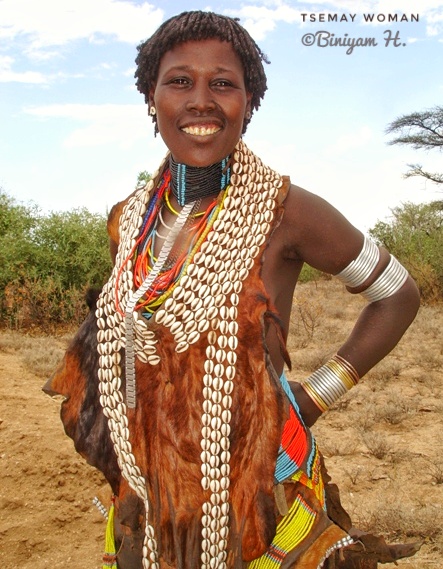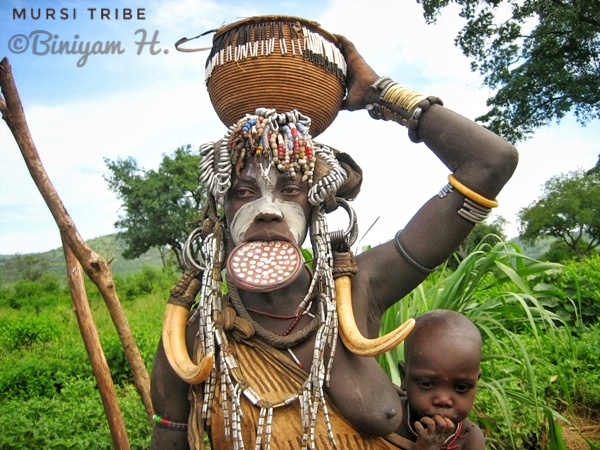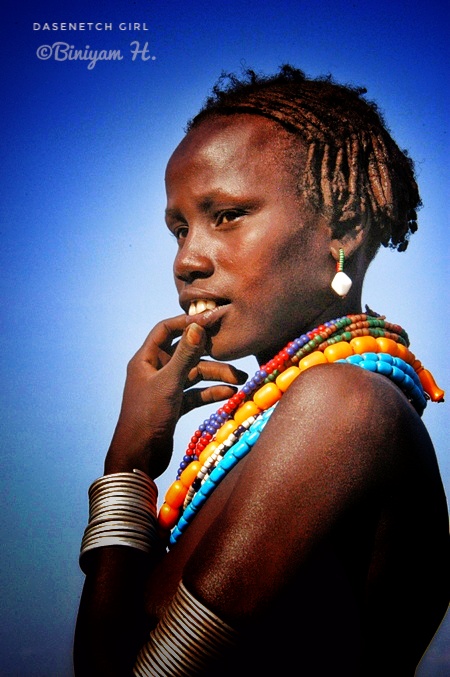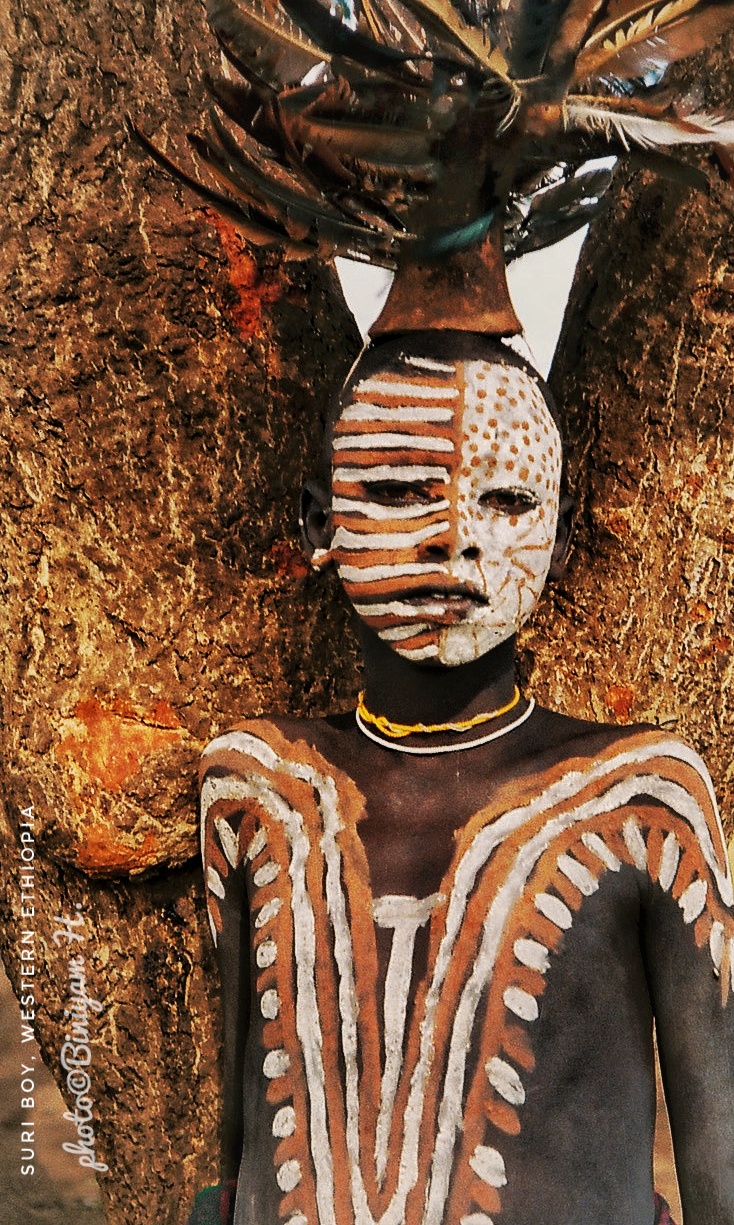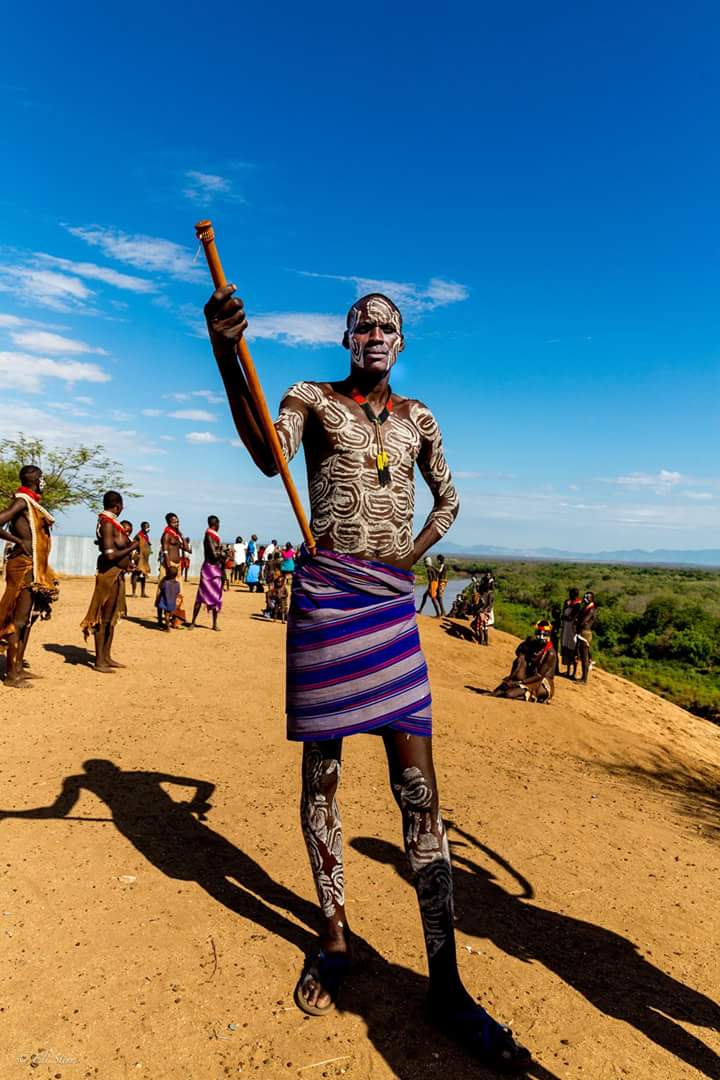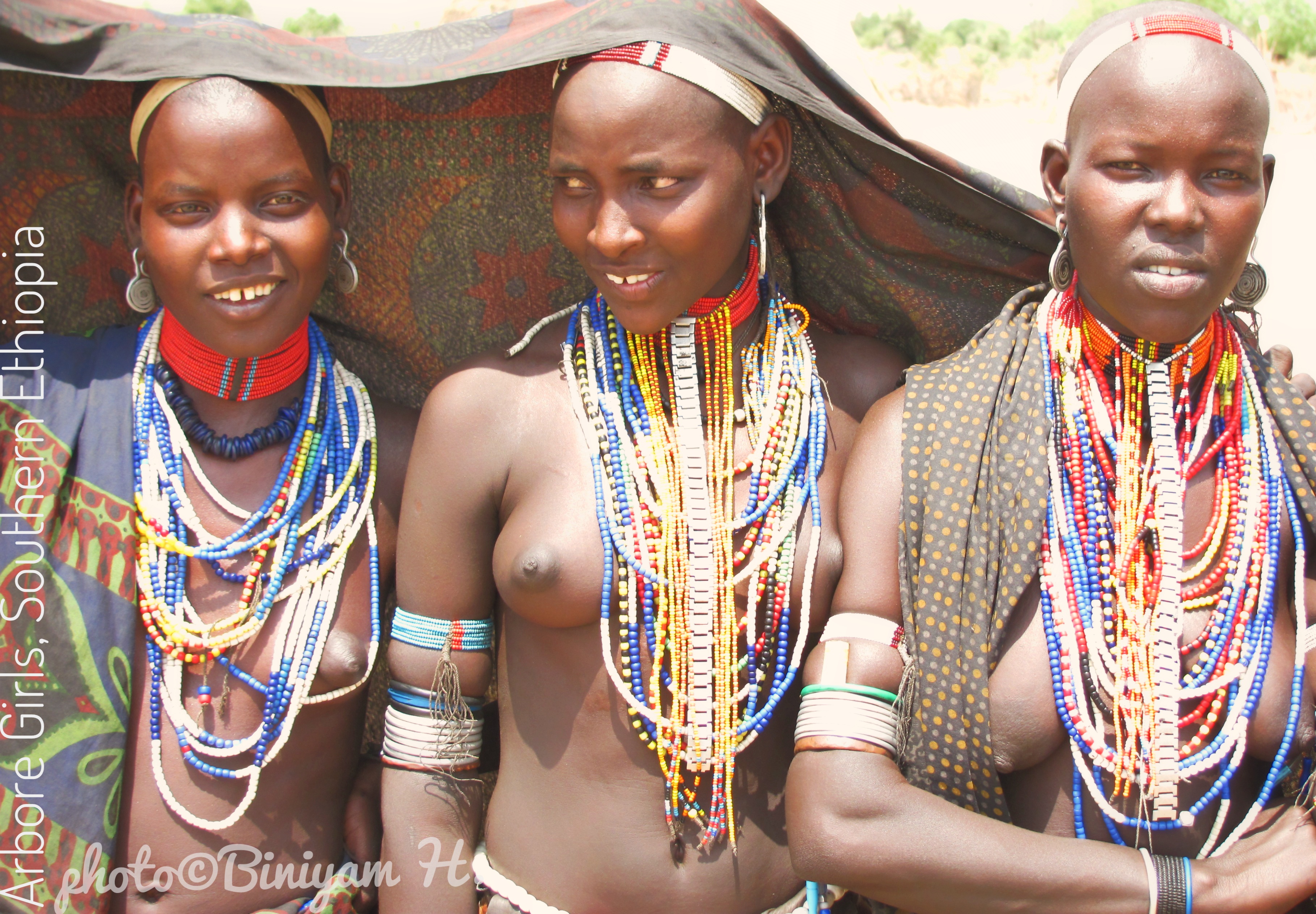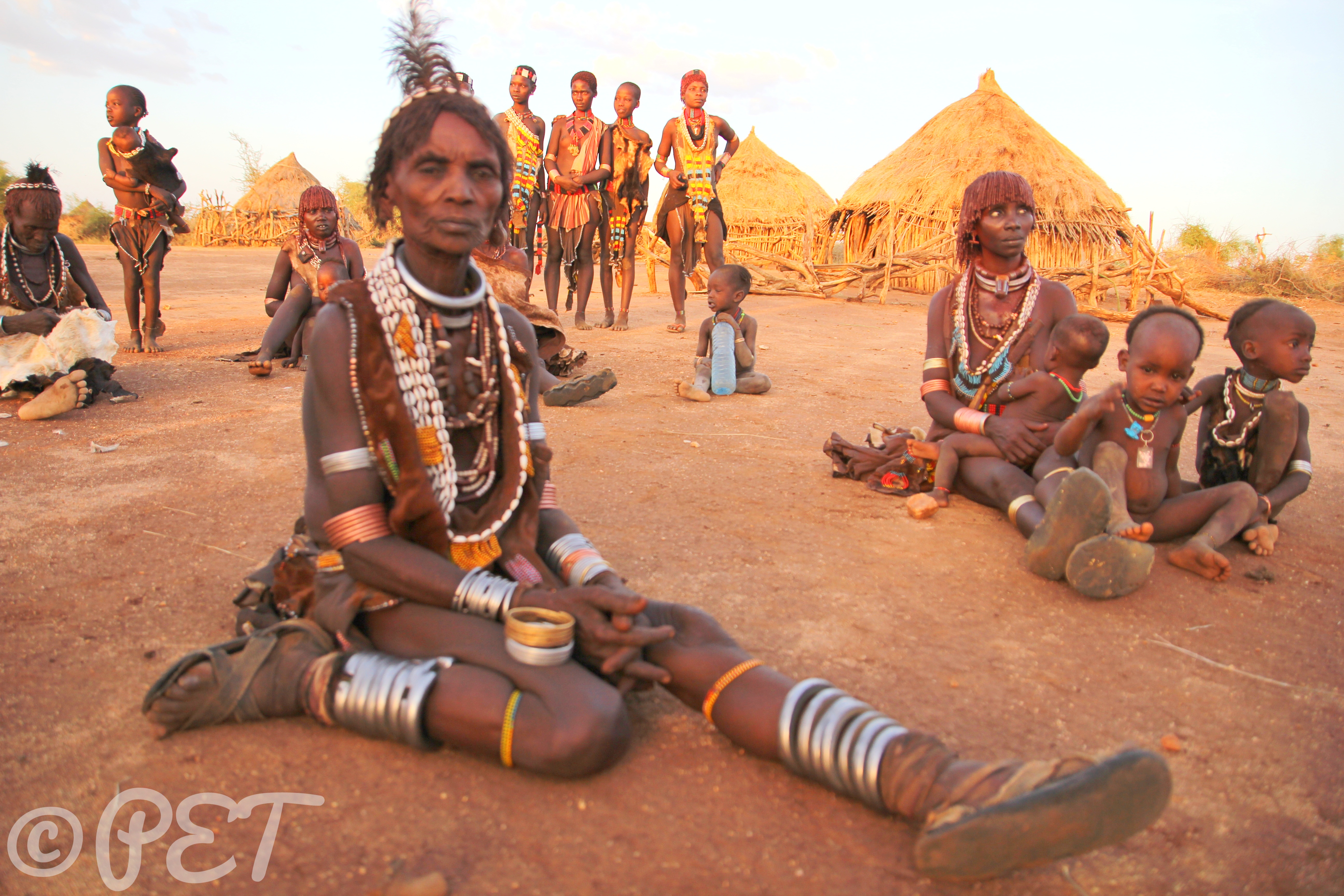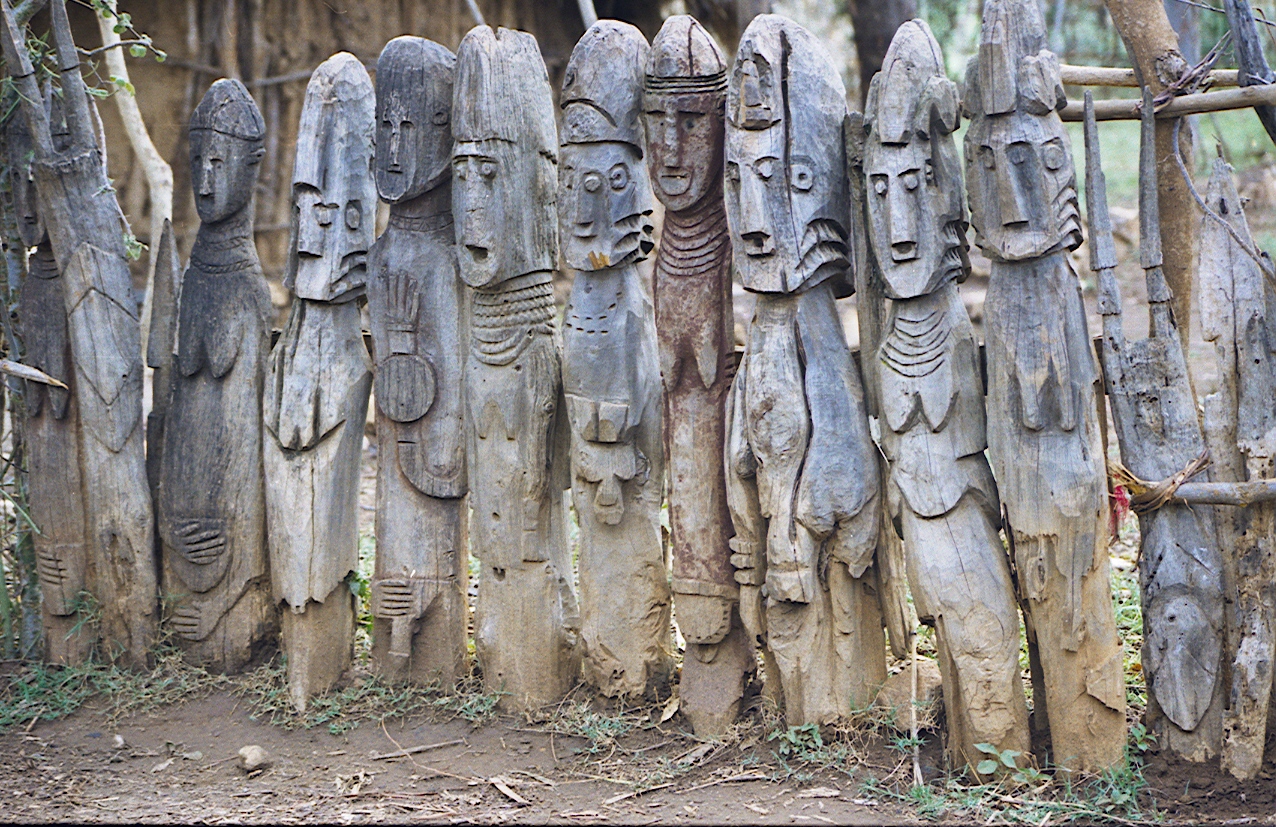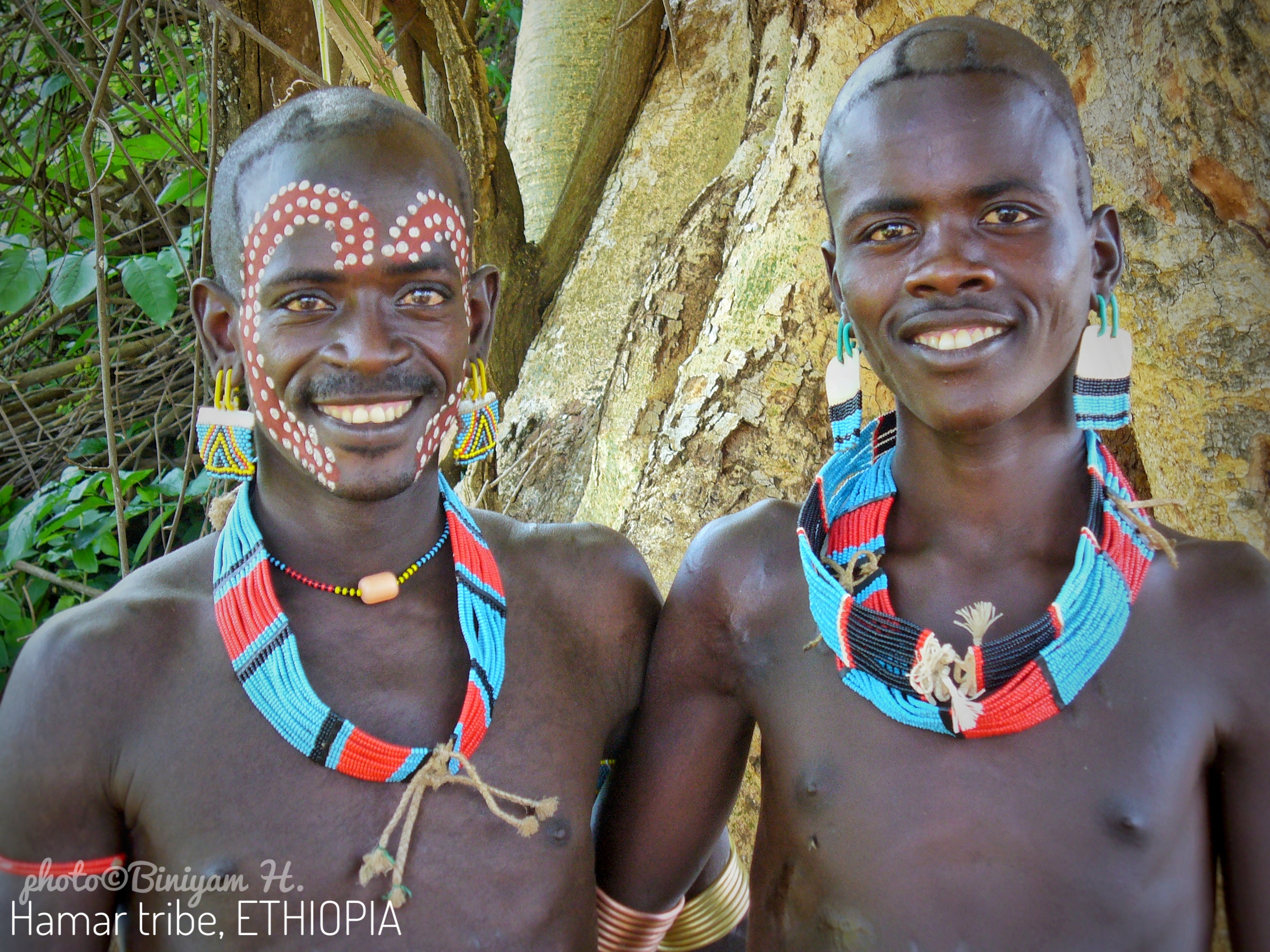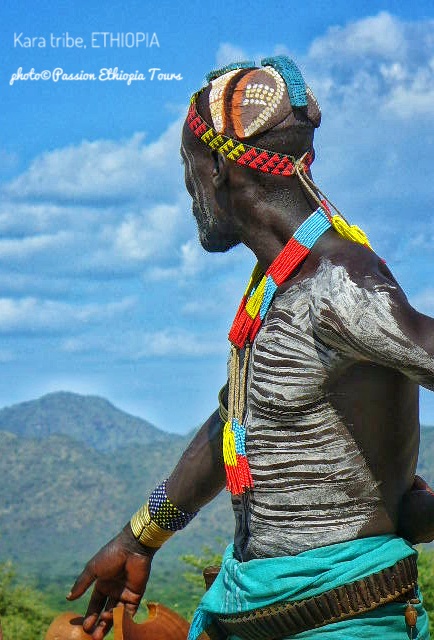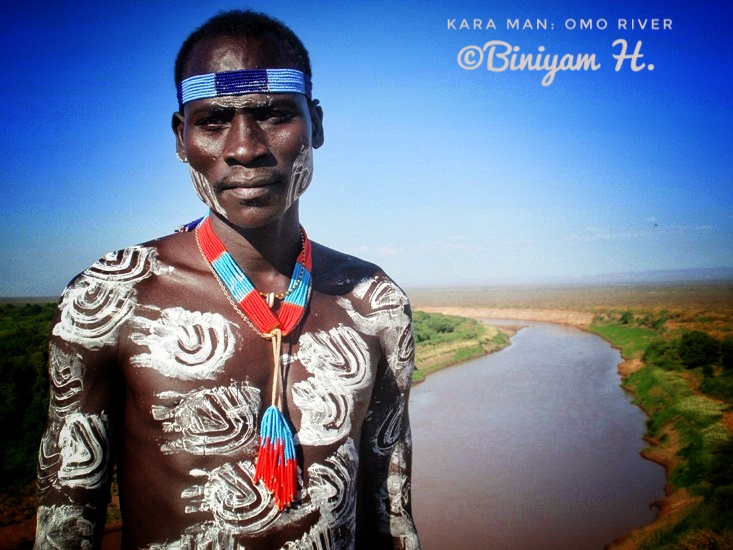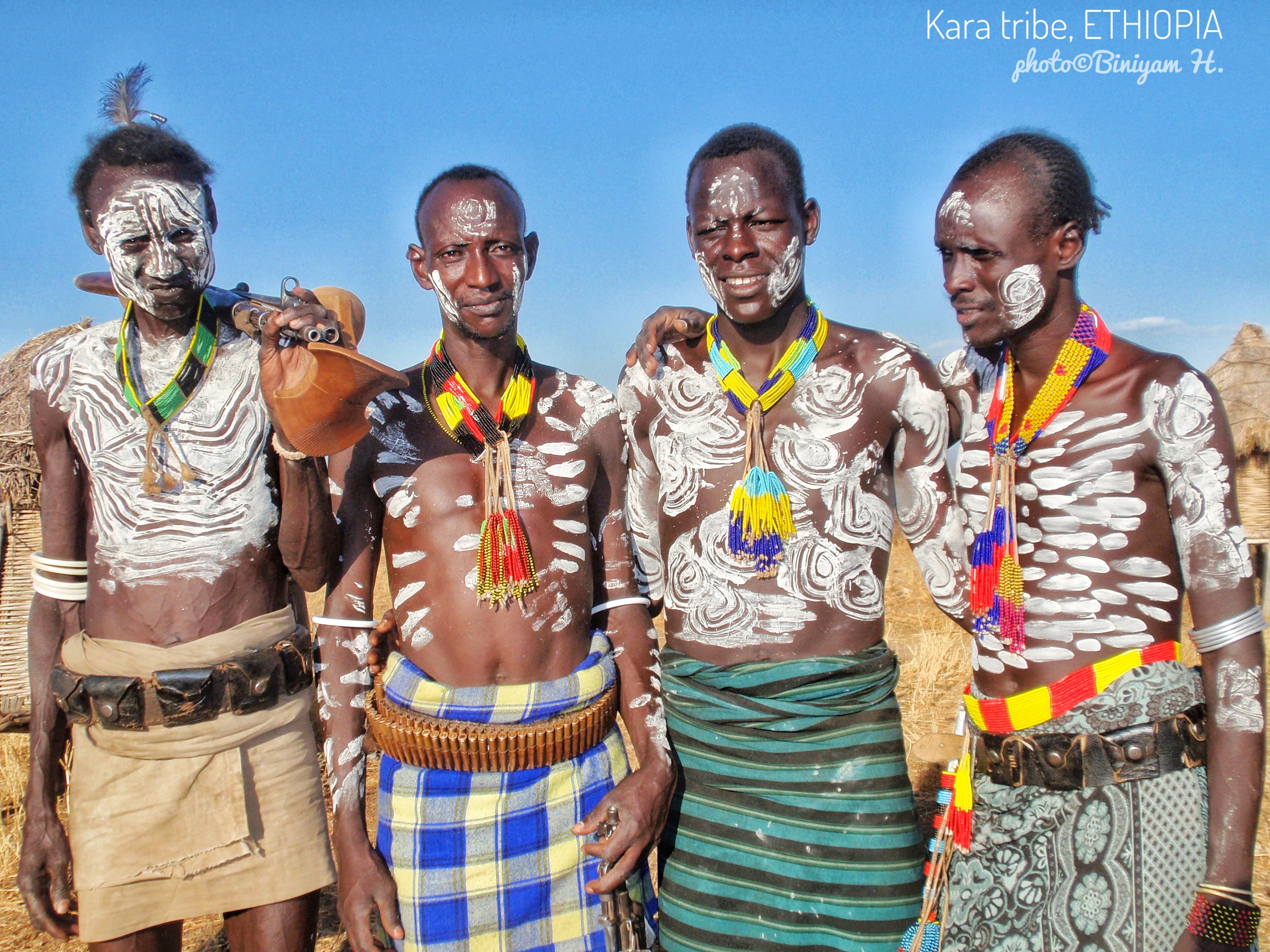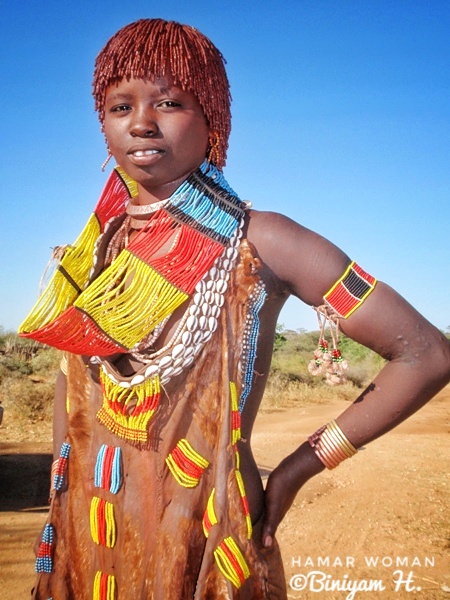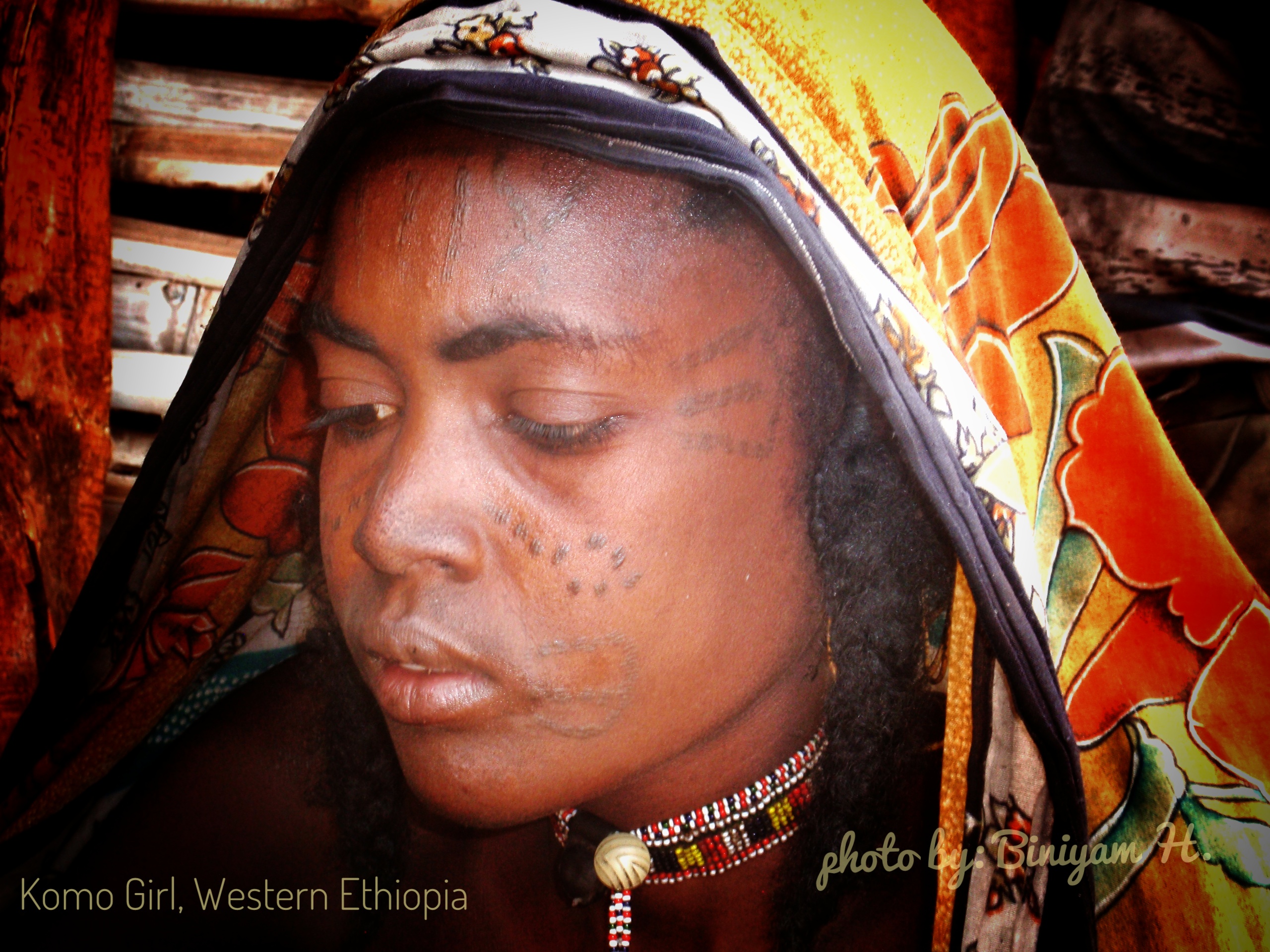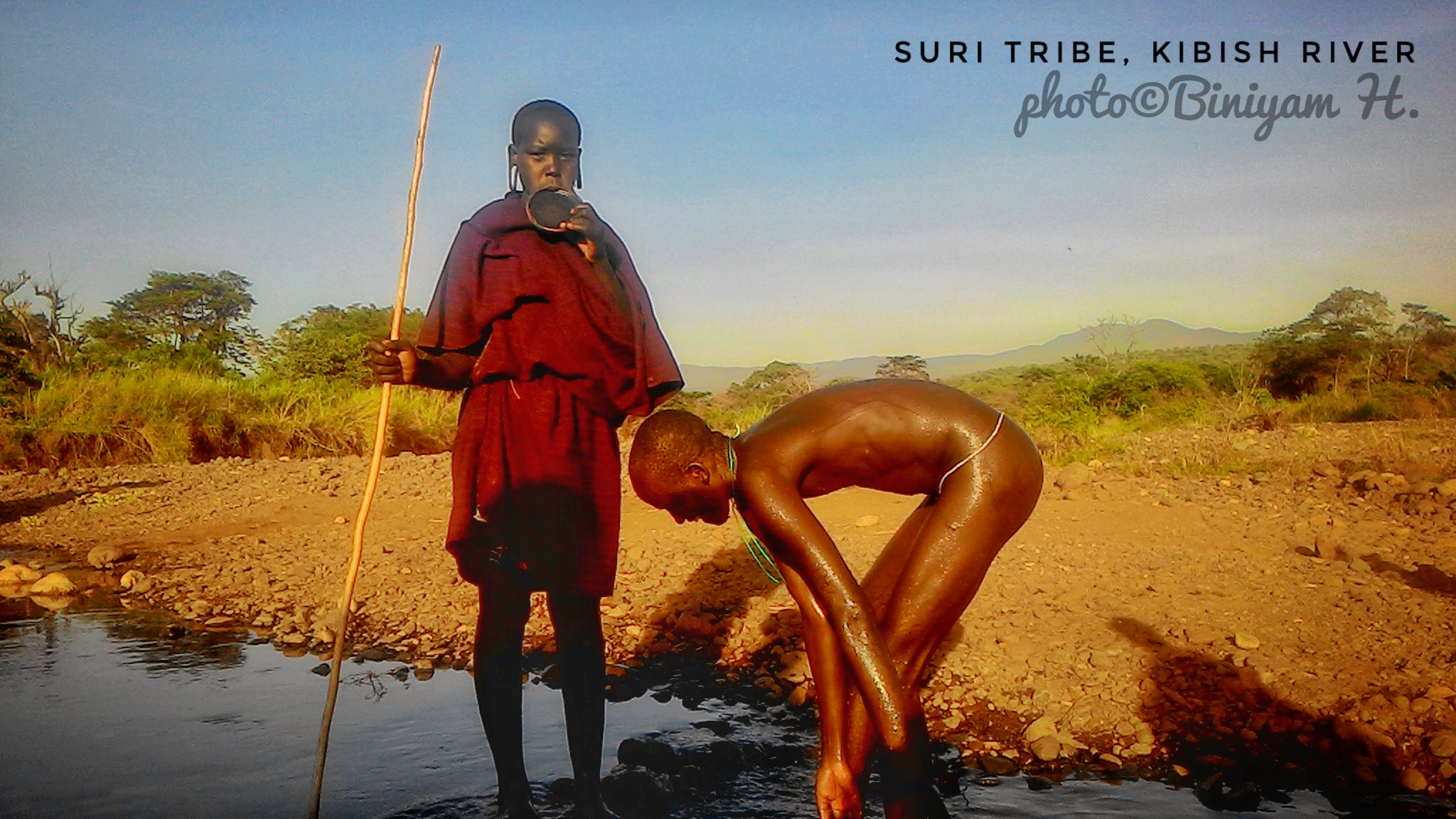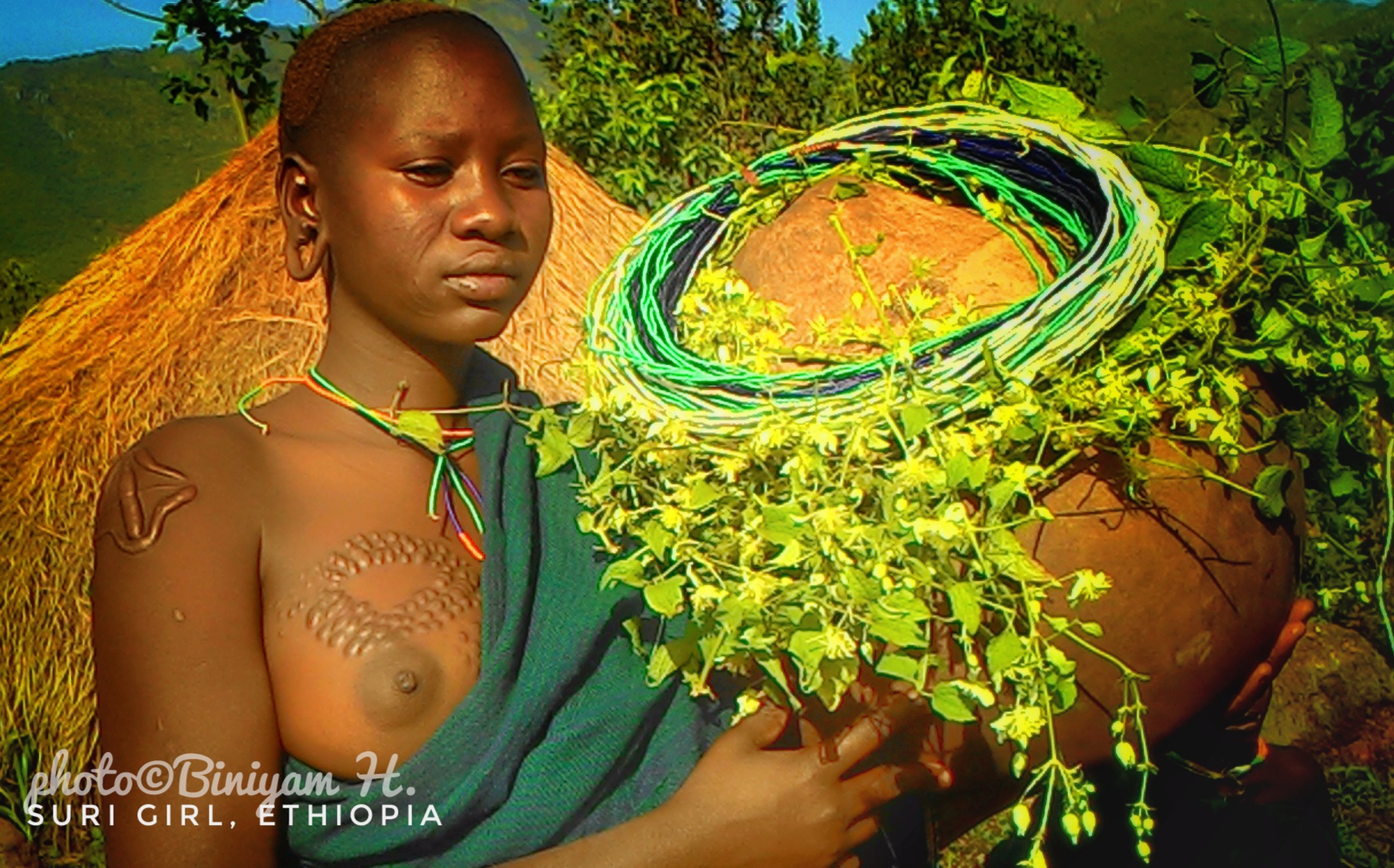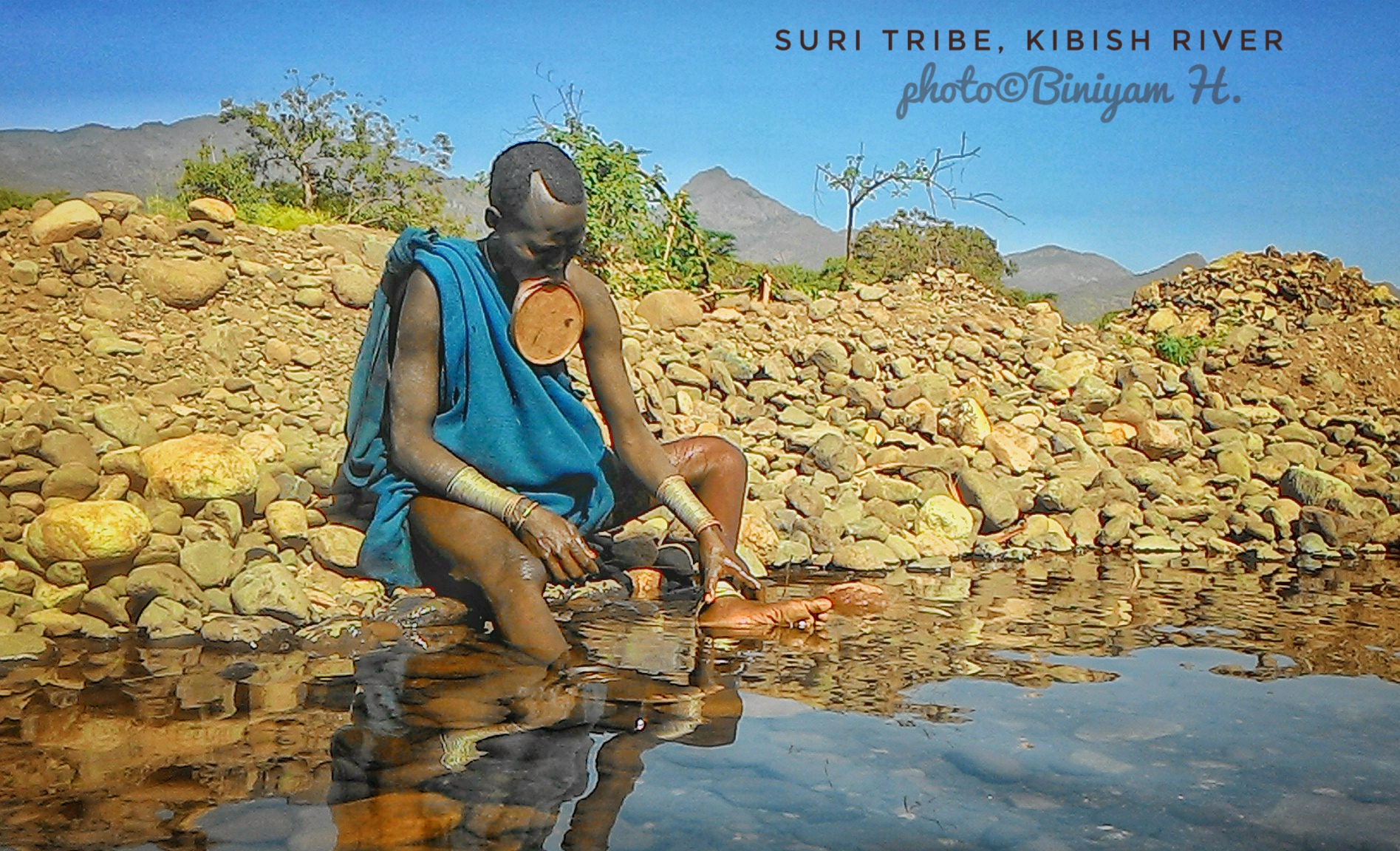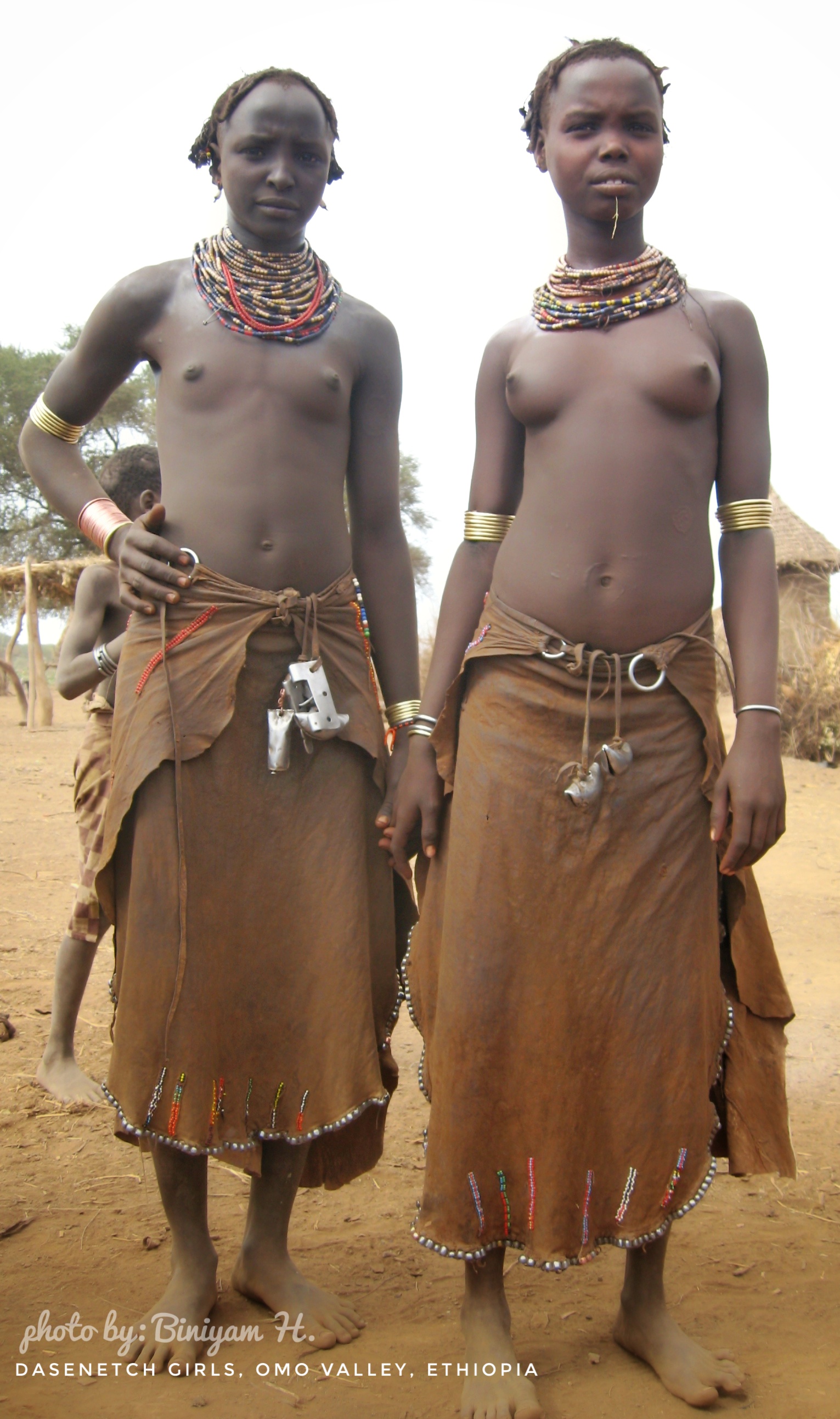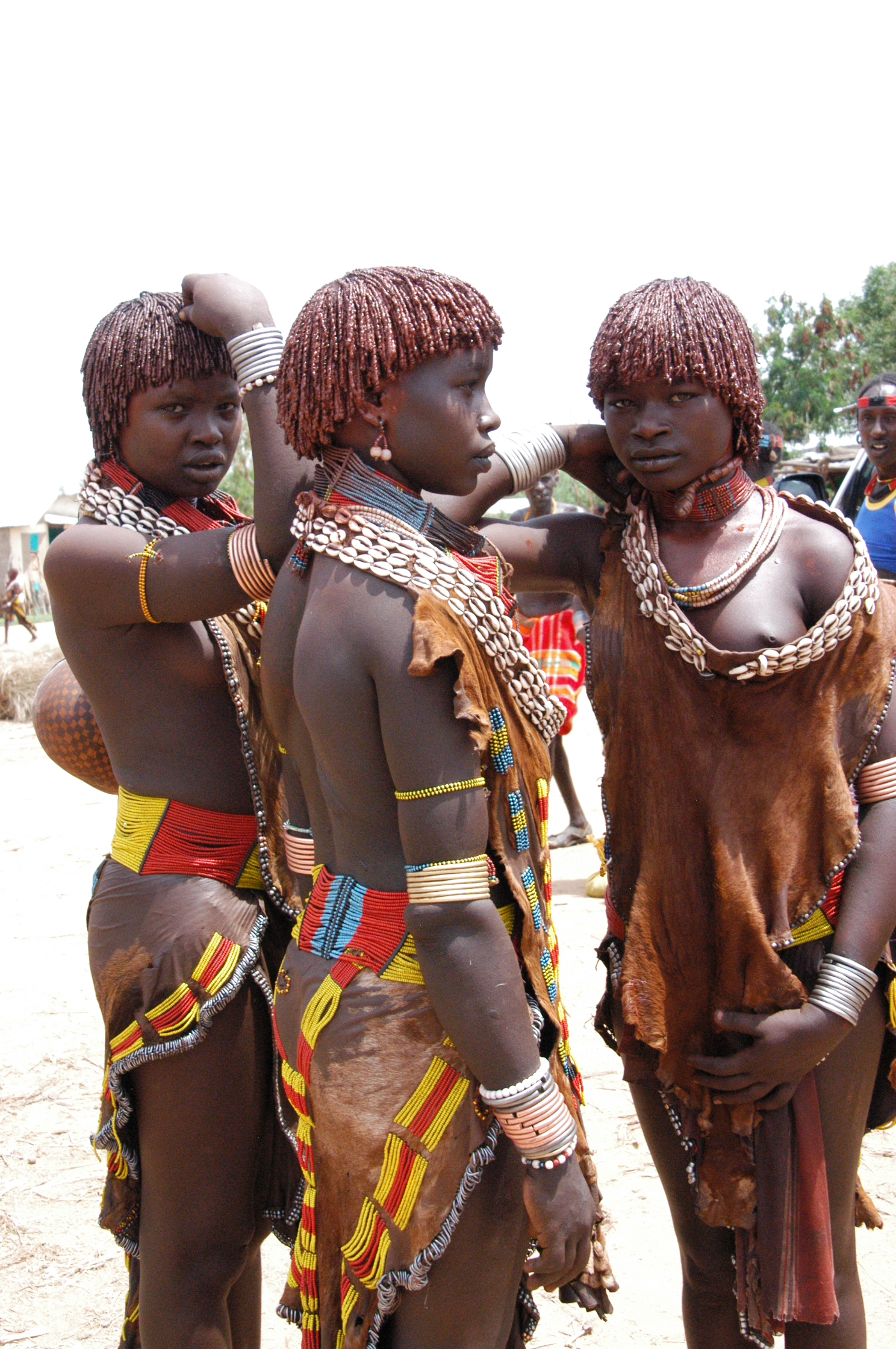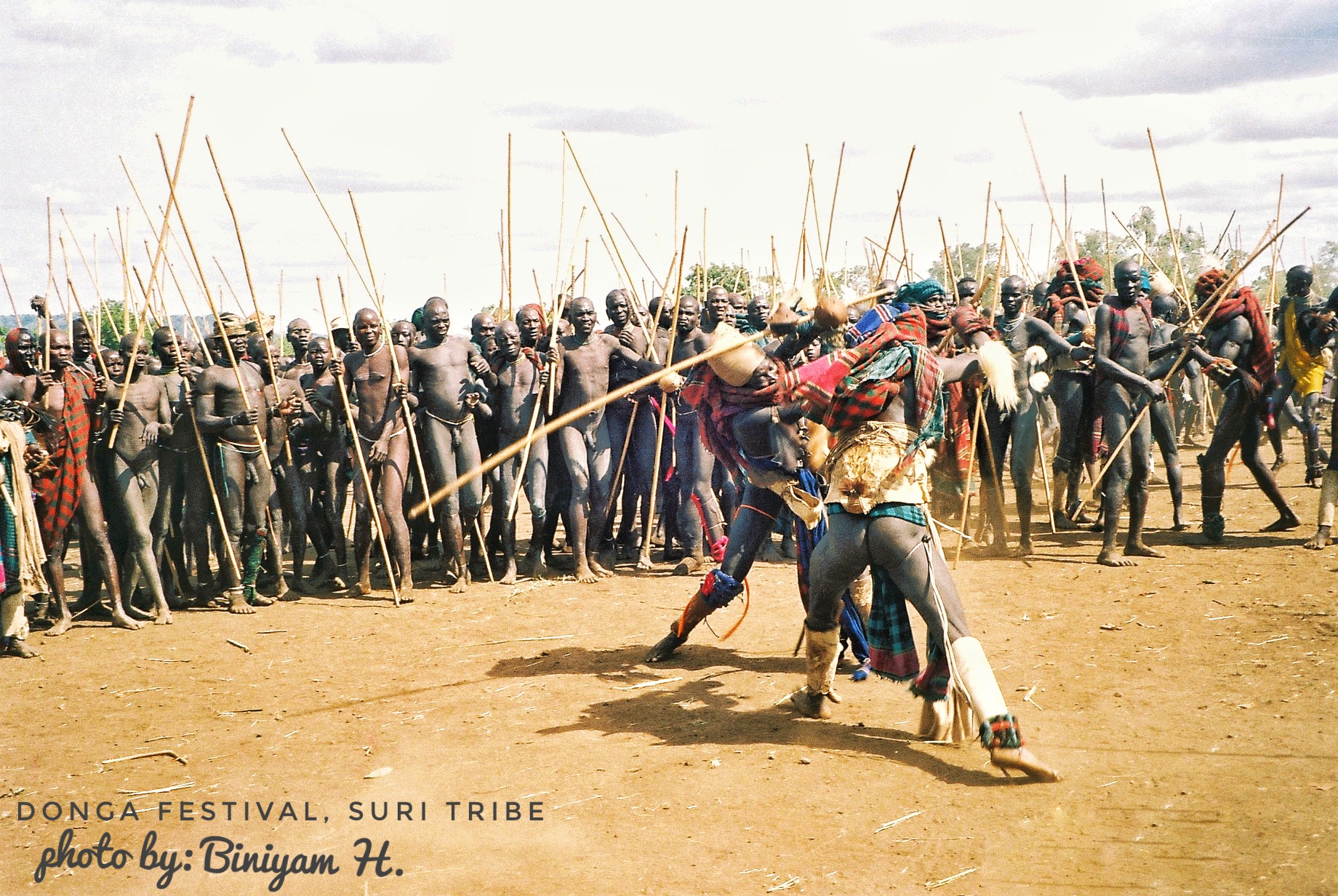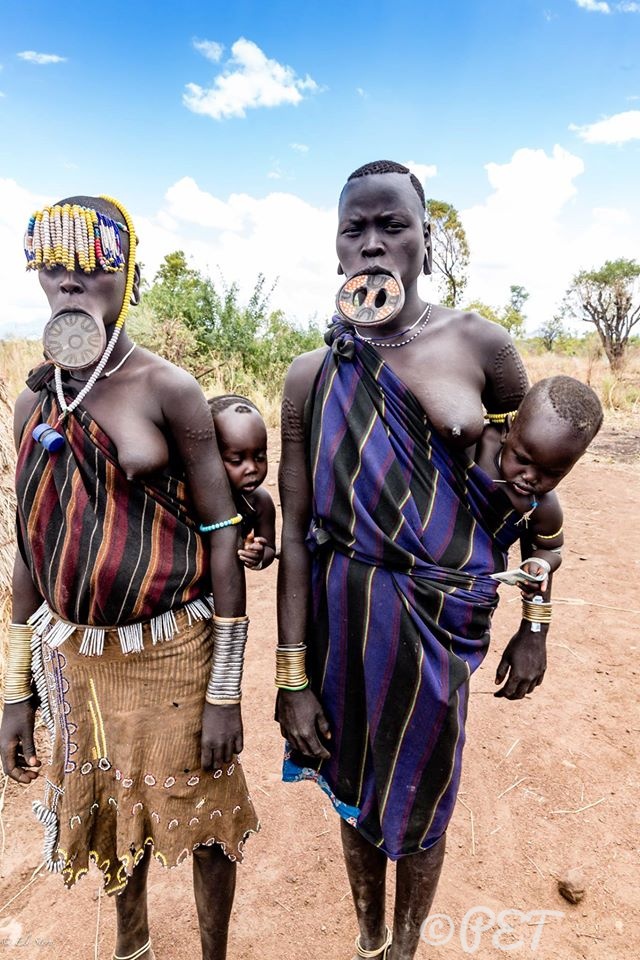Culture
Also known as Tsemako, the Tsemay belong to the broad Afro-Asiatic linguistic group and in particular to the lowland east Cushitic family in which the Dassanatch and the Arbore are also part. The total number of the Tsemay does not exceed 10,000 people. Their neighbors include the Konso to the east, the Banna - Bashada group to the west, the Male to the north, and the Arbore to the south. They occupy the semi-arid region of the Weyto valley, which is found west of the Weyto River. Here, the Tsemay live as agro - pastoralist. The banks of the Weyto River are particularly suitable for crop cultivation and other plantations like cotton. However, the Tsemay mainly grow sorghum and millet. The Tsemay society, unlike most other people in rural Ethiopia, does not have a custom, which emphasizes on the availability of girls virginity until their official day of marriage. In other words, a Tsemay girl, if she wishes to, can have a sexual partner with whom she can engage in premarital relations. However, Tsemay culture strictly prohibits the girls from bearing a child out of this relation. Thus, in the Tsemay culture, the freedom to have a pre-marital sexual partner, does not necessarily guarantee the freedom to bear child, which in turn necessitates marriage. In the Tsemay land, marriage can be arranged with or without the will of the girl. Yet regardless of the consent of their daughter, her parents always take the binding decision of the matter. Once her parents gave their approval, the bridegroom's parents are responsible for the preparation of the wedding feast. Tsemay bride's hands are not given to her husband. Instead, she is handed over to her parents -in-law. This takes place at the time when the bridal group is summoned to the party. According to the culture, until he is required to join the party, the bridegroom must not appear in the occasion. During the wedding feast, the bride and the bridegroom shave and put butter on their heads. From this day on, the new couple is freed from any sort of obligation or work for the next six to twelve months. Excepting their honeymoon time, Tsemay couples do not eat together at home from the same plate for the whole of their life. Similar to other Omo valley people, the Tsemay are polygamous society, which follows the paternal line. They have regulations, which prohibit marriages between very closely related individuals. Traditionally inter marriage with the Benna is allowed. However, the union is always one directional. Thus, if there is any conjugal union between Tsemay and Banna people, it is always the case that a Tsemay woman marrying a Benna man, never the other way around. The traditional costume of the Tsemay women involves a leather outfit. While married women's leather apron is wide and can cover both sides of the legs, that of the unmarried is a short skirt with a long v-shaped leather apron which is only enough to cover the backs of the legs. Although the major marriage payment comes in the form of livestock, other items such as honey, grain, clothes, coffee beans, bullets and 'arake' are also accepted. In order to get the hands of a girl, a Tsemay man must prepare all or most of the above items in abundance. Nevertheless, collecting this bride wealth is so hard for the suitor that he is usually helped by his closest kinsmen. In this respect, the contribution of his father and his uncle(s) is immense. In the final analysis, it is her parents, not the bride, who are the real beneficiaries of this bride wealth. The justification given for this is that it is a return for all possible investments made in her upbringing. In addition, the bride wealth compensates for the loss of her labor and potential for reproduction.
Also known as Tsemako, the Tsemay belong to the broad Afro-Asiatic linguistic group and in particular to the lowland east Cushitic family in which the Dassanatch and the Arbore are also part. The total number of the Tsemay does not exceed 10,000 people. Their neighbors include the Konso to the east, the Banna - Bashada group to the west, the Male to the north, and the Arbore to the south. They occupy the semi-arid region of the Weyto valley, which is found west of the Weyto River. Here, the Tsemay live as agro - pastoralist. The banks of the Weyto River are particularly suitable for crop cultivation and other plantations like cotton. However, the Tsemay mainly grow sorghum and millet. The Tsemay society, unlike most other people in rural Ethiopia, does not have a custom, which emphasizes on the availability of girls virginity until their official day of marriage. In other words, a Tsemay girl, if she wishes to, can have a sexual partner with whom she can engage in premarital relations. However, Tsemay culture strictly prohibits the girls from bearing a child out of this relation. Thus, in the Tsemay culture, the freedom to have a pre-marital sexual partner, does not necessarily guarantee the freedom to bear child, which in turn necessitates marriage. In the Tsemay land, marriage can be arranged with or without the will of the girl. Yet regardless of the consent of their daughter, her parents always take the binding decision of the matter. Once her parents gave their approval, the bridegroom's parents are responsible for the preparation of the wedding feast. Tsemay bride's hands are not given to her husband. Instead, she is handed over to her parents -in-law. This takes place at the time when the bridal group is summoned to the party. According to the culture, until he is required to join the party, the bridegroom must not appear in the occasion. During the wedding feast, the bride and the bridegroom shave and put butter on their heads. From this day on, the new couple is freed from any sort of obligation or work for the next six to twelve months. Excepting their honeymoon time, Tsemay couples do not eat together at home from the same plate for the whole of their life. Similar to other Omo valley people, the Tsemay are polygamous society, which follows the paternal line. They have regulations, which prohibit marriages between very closely related individuals. Traditionally inter marriage with the Benna is allowed. However, the union is always one directional. Thus, if there is any conjugal union between Tsemay and Banna people, it is always the case that a Tsemay woman marrying a Benna man, never the other way around. The traditional costume of the Tsemay women involves a leather outfit. While married women's leather apron is wide and can cover both sides of the legs, that of the unmarried is a short skirt with a long v-shaped leather apron which is only enough to cover the backs of the legs. Although the major marriage payment comes in the form of livestock, other items such as honey, grain, clothes, coffee beans, bullets and 'arake' are also accepted. In order to get the hands of a girl, a Tsemay man must prepare all or most of the above items in abundance. Nevertheless, collecting this bride wealth is so hard for the suitor that he is usually helped by his closest kinsmen. In this respect, the contribution of his father and his uncle(s) is immense. In the final analysis, it is her parents, not the bride, who are the real beneficiaries of this bride wealth. The justification given for this is that it is a return for all possible investments made in her upbringing. In addition, the bride wealth compensates for the loss of her labor and potential for reproduction.

